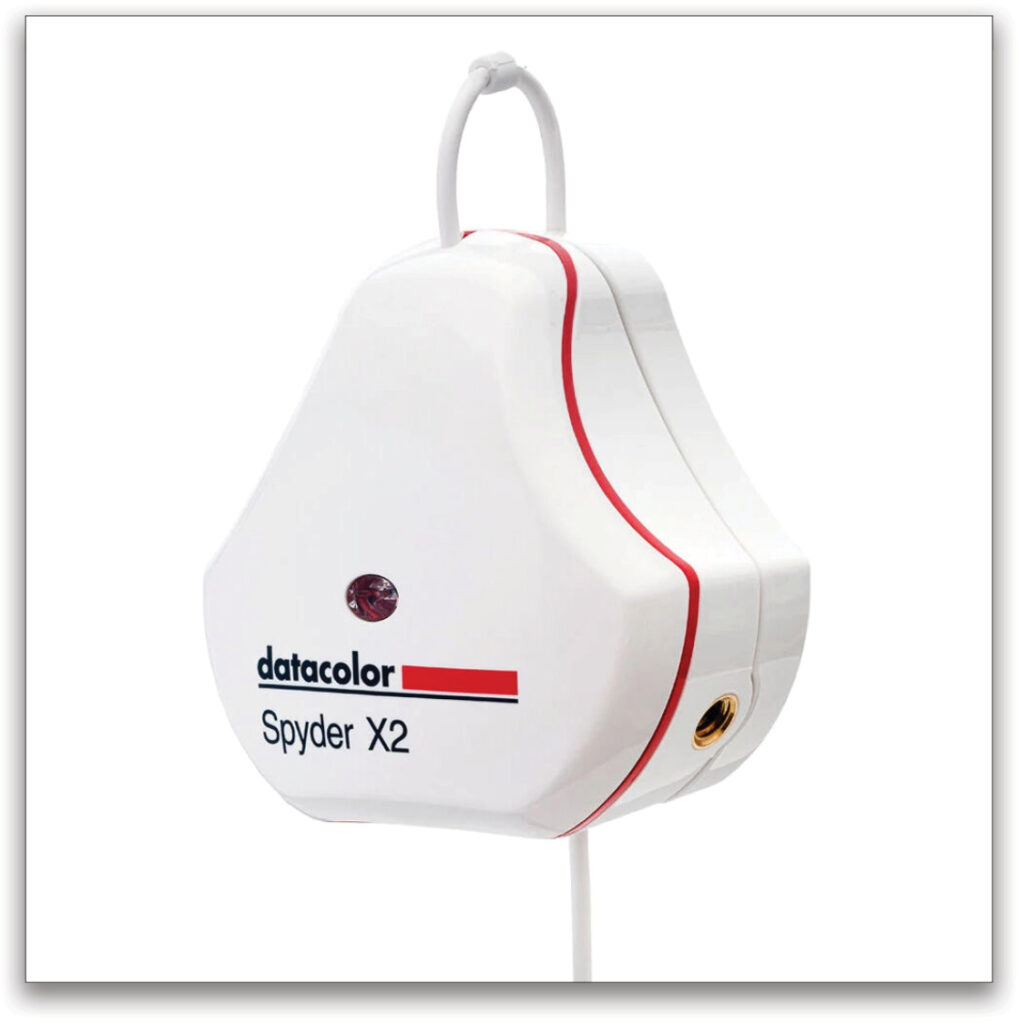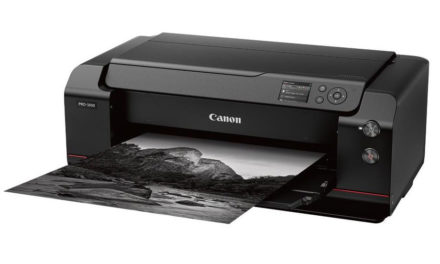Precision Colorimeter
Review by Steve Baczewski
A predictable precision color workflow from image capture, image editing, to printing requires a calibrated display; otherwise, you’re wasting time tweaking your images and money on expensive paper stock. The importance of a calibrated display holds true for all photographic fields from landscape to product to fashion photography.
It’s been four years since Datacolor marketed their last colorimeter, the Spyder X Elite, and to ensure compatibility with the latest display technologies and computer operating systems, they recently announced the availability of their next-generation colorimeter, the Spyder X2 Ultra. The new Spyder X2 Ultra colorimeter now supports high-brightness HDR displays up to 2000 nits; it has redesigned software with faster processing times; and now uses USB-C connectivity. Just in case, Datacolor also supplies a USB-A adapter for older computers. In a related notice, Datacolor announced they’ll no longer be upgrading the software for the Spyder 2–5.
The new Spyder X2 Ultra looks exactly like the older Spyder X Elite: white smooth body with a lens-protecting cover that serves double duty as a counter-balance weight to stabilize the Spyder when it sits on the screen. Tilting the screen back slightly gives added assurance that the colorimeter won’t move.

The redesigned software is streamlined, easier to navigate with faster processing times. It has a diagnostic section that will analyze individual display features, including gamut, tone response, white point, screen uniformity, and color accuracy. The Studio Match feature allows multiple displays to be calibrated for color consistency, and the Soft Proofing feature specifically predicts how a print will look on selected printers and paper stock. Despite being redesigned, the software’s core features are the same as the four-year older Spyder X Elite software package, including their sections for diagnostics, Studio Match, and Proofing. The redesigned software is more a matter of “moving the chairs around.”
When the X2 is on your screen, it will check your ambient light conditions. The software offers several calibration options including an advanced interface to accommodate your custom needs for screen brightness, contrast, and color temperature. Datacolor’s program offers suggestions, but I set my calibration targets to a color temperature of 6,500, a gamma of 2.2, and a screen brightness of 120 nits; however, everyone must determine what’s best for their situation.
Most new displays have their own built-in look-up tables (LUT) that bypass your computer’s graphics card and directly store the calibration results. Datacolor’s software displays a series of black-and-white and color patches on your display, while the Spyder X2 analyzes and resolves discrepancies and, at the end, creates a display profile. During this process, the software will ask you to adjust your display’s brightness by using your monitor’s OSD (onscreen display) to assure your specified target. Once finished, the new profile can be visualized and compared to what you had previously. The new Spyder X2 Ultra achieved 98% of the commonly used Adobe 1998 color space.
To check the color accuracy of the resulting display profile, I tested it by printing out several commonly used IT eight-color reference targets. These targets include skin tones, color and grayscale patches, and images that cover typical photographic situations. The resulting Spyder X2 Ultra monitor calibration was spot-on with a precise screen-to-print match. Although the results from the Spyder X2 Ultra were excellent, I was unable to distinguish it with my eyes from the results I got using their four-year-old Spyder X Elite. I checked and compared for highlights, shadow details, gradients, color casts, general color, and B&W tonal rendition, and I used the same printer and ICC paper profiles.
If you don’t currently own a monitor-calibration device, the Spyder X2 Ultra is a fine colorimeter with well-organized software, but if you already own the four-year-old Spyder X Elite, I would keep on using it.






